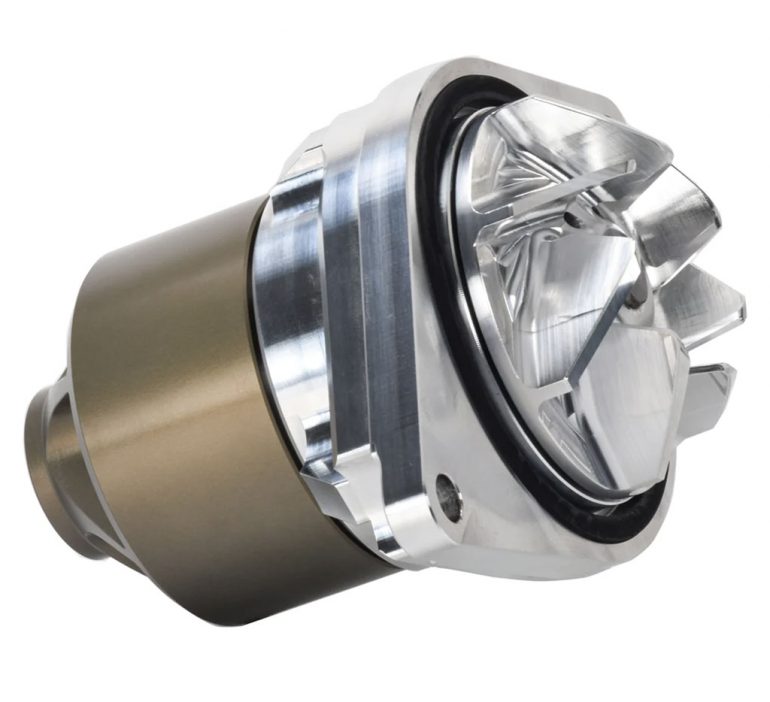
Your engine’s cooling system is one of the most important components under your car hood. Like the heart pumping blood in the human body, the water pump circulates vital coolant through the engine to regulate operating temperature. Upgrading to an improved water pump can go a long way in boosting engine health and extending the service life of your ride.
What does the water pump do?
The water pump’s job is to push coolant from the radiator through passages in the engine block and cylinder heads. As it flows through, the coolant absorbs heat from the engine. The coolant then cycles back to the radiator to shed this heat so it can make the rounds again. This constant flow of cooling fluid regulates engine temperature.
The standard water pump, like the Cummins Water Pump, moves an adequate volume of coolant for stock engines. But upgraded, high-performance pumps can optimize this coolant circulation even further. The enhanced operation keeps high-strung or modified engines running cool. Let’s take a closer look at some of the benefits:
1. Improved coolant flow
More powerful water pumps can circulate coolant much more efficiently. Upgraded impellers and bearings in these pumps improve the fluid dynamics. This means the coolant flows faster through the engine and radiator.
Faster flow equals better cooling, which is extremely beneficial for upgraded engines. Additional displacement or power adders like turbochargers or superchargers generate a lot more heat. An improved water pump matches the cooling demands of these built engines.
2. Preventing overheating issues
Here’s an interesting fact—engine coolant only boils at around 275°F. But modern engines start experiencing heat damage at temperatures as low as 240°F. Letting engines creep into the danger zone leads to failed gaskets, eroded coatings and bearings, piston ring issues, and expensive engine repairs.
Upgraded water pumps keep coolant temperatures as low as possible. This prevents the thermal breakdown of lubricants and coolants, reduces component stresses, and keeps your engine running happily. Cooler operating temperatures extend the lifespan of engines, especially higher-performance builds.
In addition to water pump upgrades, installing an improved oil cooler 6.0 can aid in preventing overheating by maintaining optimal oil temperatures.
3. Superior construction
Many stock water pumps use plastic or nylon materials in their impeller housing and blades. While adequate for bone-stock engines, these factory water pump components can deform and warp over time. Higher engine temperatures accelerate wear on cheaper plastic pumps.
In contrast, most aftermarket performance water pumps use cast iron or aluminum housings mated with reinforced impellers. This adds strength and rigidity while enabling precise tolerances. Better materials reduce internal corrosion and leakage. Overall, upgraded pumps simply last longer while supporting bigger power numbers.
4. Less cavitation
You may have heard mechanics use the term ‘cavitation’ regarding water pumps before. Cavitation refers to air bubbles that form inside the moving coolant, disrupting fluid flow. As these bubbles form and collapse, they create damaging shockwaves inside the pump. Over time, this erodes the internal surfaces of water pump components.
By engineering a more efficient flow path inside the pump, manufacturers reduce this insidious cavitation corrosion. Upgraded water pump designs prevent air pockets from forming in the coolant, ensuring smooth operation. Less cavitation means longer service life for your entire cooling system.
5. Supports larger engines
Maybe you’ve rebuilt your engine with a stroker kit, added forced induction, or transplanted it into a bigger motor. Of course, more displacement or power means more wasted heat. Without matching cooling system upgrades, factory water pumps can’t keep pace.
High-flow, high-pressure water pumps are required to cool upgraded powerplants properly. Always make cooling system improvements in unison with engine mods. Bolting on too much motor without improving the oiling, fueling, or cooling capabilities is causing problems. A killer engine deserves a killer cooling setup.
6. Simplified maintenance
Many late-model cars and trucks have water pumps driven by the timing belt. While convenient, this often requires complex timing belt removal to access the water pump. And if the pump seals fail, contamination can destroy the entire belt drive.
Standalone water pumps are easier to service when needed. Their isolated design prevents collateral damage too. You can replace just the water pump rather than the entire front drivetrain. The convenience of maintenance keeps engines healthy over hundreds of thousands of miles.
In summary
Your stock water pump was designed for stock horsepower numbers. Exceeding factory output levels requires improvements to the cooling system. Upgraded water pumps with higher flow, smarter designs, and better construction quality ensure modified engines stay cool. At the end of the day, a cool engine is a happy engine that lasts for years to come!

Automotive Addicts Contributors are a collective of guest writers, industry professionals, and passionate enthusiasts who bring fresh perspectives to the Automotive Addicts platform. Focused on delivering timely news, in-depth reviews, and unique insights, these contributors help keep the site dynamic and engaging. Many use the platform to expand their reach and build credibility within the automotive media world, adding depth and variety to the content that drives the Automotive Addicts community.